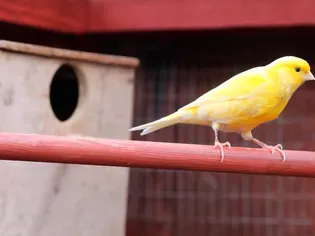Moustached Parakeet: Bird Species Profile
Updated on 05/26/24

Unveiling the Enigmatic Moustached Parakeet: A Comprehensive Species Profile
Embark on a Captivating Journey into the World of the Moustached Parakeet
Prepare to be enthralled by the captivating Moustached Parakeet (Psittacula alexandri), a vibrant avian species that has captivated bird enthusiasts for centuries. Our comprehensive species profile will take you on an immersive expedition into their captivating world, revealing their unique characteristics, behaviors, and conservation status.
A Symphony of Colors and Markings
The Moustached Parakeet paints a striking canvas with its plumage, adorned in a mesmerizing blend of hues and intricate markings. Its bright green body serves as a vibrant backdrop for a contrasting black bib and a distinctive blue panel on the wings. The namesake mustache, a narrow black band beneath the beak, adds an air of intrigue to their appearance. These colorful attributes make them a true spectacle to behold in the wild.
A Melodious Chorus
The Moustached Parakeet's vocal repertoire is equally captivating. They possess a diverse array of calls, ranging from melodious whistles and trills to raucous squawks. Their calls play a crucial role in communication, allowing them to interact with their flock, defend their territory, and attract potential mates.
Habitat and Distribution
These parakeets primarily inhabit tropical and subtropical forests and woodlands, where they find an abundance of fruits, nuts, and seeds. Their geographic range spans southeastern Asia, including countries like India, Bangladesh, Myanmar, Thailand, and Vietnam. They have also established introduced populations in other parts of the world, such as Singapore, Hong Kong, and the Philippines.
Breeding Habits
Moustached Parakeets exhibit monogamous mating systems, forming strong pair bonds that typically last a lifetime. Their breeding season coincides with the monsoon season, and they construct nests in tree cavities or among dense foliage. The female typically lays a clutch of 2-4 eggs, which are incubated by both parents.
Diet and Feeding Habits
As frugivores, Moustached Parakeets primarily feed on a variety of fruits, berries, and nuts. They also supplement their diet with seeds, buds, and occasionally insects. Their foraging behavior involves joining flocks and traveling together in search of suitable food sources.
Conservation Status
The Moustached Parakeet is currently classified as "Near Threatened" by the International Union for Conservation of Nature (IUCN). Habitat loss, fragmentation, and illegal trade pose significant threats to their populations. Conservation efforts are underway to protect their remaining habitats and ensure their long-term survival.
Examples of Captivating Behaviors
* Cooperative Feeding: Moustached Parakeets exhibit altruistic behavior by cooperating with their flock members to locate and access food sources. They share information about feeding sites and assist in guarding their territory from predators.
* Nest Defense: Both male and female parakeets fiercely defend their nests from potential threats. They display aggressive behavior and emit alarm calls to deter intruders, ensuring the safety of their young.
* Vocal Mimicry: Moustached Parakeets have the ability to mimic sounds from their environment, including human speech. This remarkable skill allows them to communicate with both their own species and other avian species.
Conclusion
The Moustached Parakeet is a captivating avian species that embodies a vibrant blend of colors, melodies, and behaviors. Their unique characteristics and ecological importance make them a treasured part of the natural world. By understanding their biology, conservation status, and enigmatic nature, we can contribute to their well-being and ensure their continued existence for generations to come.
Explore More Pets

Small Bird Breeds
Gloster Canary: Bird Species Profile

Small Bird Breeds
Java Finch: Bird Species Profile

Small Bird Breeds
Zebra Finch (Chestnut-Eared Finch): Bird Species Profile

Small Bird Breeds
Alexandrine Parakeet: Species Characteristics & Care

Small Bird Breeds
Canary: Bird Species Profile

Small Bird Breeds
Lovebird (Pocket Parrot) Species Profile

Small Bird Breeds
A Guide to Pet Budgie Birds

Small Bird Breeds
Types of Small Parrots
